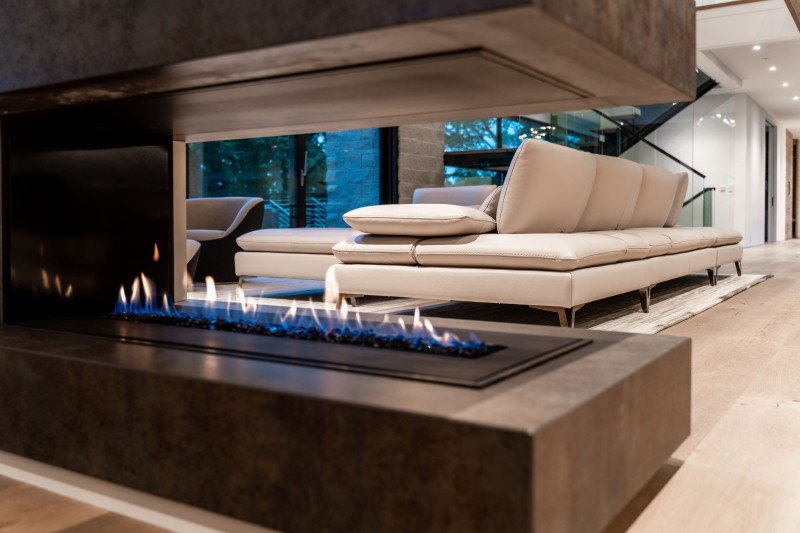Guide To Fireplaces And Stoves In 2024 Guide To Fireplaces And Stoves In 2024

The Comprehensive Guide to Fireplaces and Stoves
Fireplaces and stoves have been essential to human civilization for centuries, acting as a source of warmth, light, and convenience. Modern Fireplaces USA are available in numerous types and have developed throughout the years, dealing with diverse preferences and technological advancements. This post provides a helpful overview of fireplaces and stoves, highlighting their types, benefits, maintenance ideas, and setup considerations.
Kinds of Fireplaces
The world of fireplaces is abundant and differed. Here are the most common types:
Wood-Burning Fireplaces:
- Traditional and charming.
- Requires experienced wood and routine maintenance.
- Produces an enjoyable scent and crackling noise.
Gas Fireplaces:
- Offer convenience and ease of use.
- Available in vented and vent-free options.
- More efficient and cleaner than wood-burning alternatives.
Electric Fireplaces:
- Provide atmosphere without the need for a chimney.
- User-friendly with remote control options.
- Can be used as an additional heat source.
Pellet Stoves:
- Use compressed wood pellets as fuel.
- Extremely efficient and eco-friendly.
- Frequently geared up with thermostats for temperature level control.
Ethanol Fireplaces:
- Utilize bioethanol fuel, making them portable.
- Do not require venting, which permits versatile positioning.
- Produce a reasonable flame with minimal smoke.
Outdoor Fireplaces:
- Designed for outdoor settings; can be wood or gas-burning.
- Great for entertaining and enhancing backyard aesthetic appeals.
- Frequently built from stone, brick, or metal.
Advantages of Fireplaces and Stoves
Incorporating a fireplace or range into a home offers various advantages:
- Aesthetic Appeal: Fireplaces function as striking focal points in any space, including heat and character to home design.
- Increased Property Value: Homes with functional fireplaces tend to have higher resale worths.
- Energy Efficiency: Modern fireplaces and stoves are designed to be more energy-efficient, which can lead to lowered heating costs.
- Backup Heating Source: In case of power interruptions, wood-burning and gas fireplaces can work as necessary heating sources.
- Versatile Heating Solutions: Different types of fireplaces accommodate various heating needs and lifestyles, from cozy atmosphere to efficient heating.
| Type of Fireplace/Stove | Fuel Source | Efficiency Rating | Upkeep Level |
|---|---|---|---|
| Wood-Burning | Wood | Moderate | High |
| Gas | Natural gas/LP | High | Low |
| Electric | Electrical power | High | Extremely Low |
| Pellet | Wood pellets | High | Moderate |
| Ethanol | Bioethanol | Moderate | Low |
| Outdoor | Wood or gas | Moderate | Differs |
Upkeep Tips
Proper maintenance extends the life of fireplaces and stoves, making sure security and efficiency. Here are some vital ideas:
Regular Cleaning:
- Wood-burning fireplaces must be cleaned up after a full season of usage to eliminate soot and creosote.
- Gas fireplaces need regular examination of the burner and vents.
Regular Inspections:
- Have chimney sweeper perform yearly assessments to identify obstructions or structural damage.
- Examine the seals and gaskets on gas units to prevent leaks.
Fire Safety:
- Install smoke and carbon monoxide gas detectors in homes with fireplaces or stoves.
- Keep a fire extinguisher near the fireplace or stove for emergency situations.
Usage Quality Fuel:
- For wood-burning systems, always use experienced wood; prevent dealt with or painted wood.
- When utilizing pellets, guarantee they are stored properly to prevent wetness absorption.
Handle Airflow:
- Keep vents and ducts clear to promote reliable ventilation and airflow.
- Consider utilizing glass doors or screens to decrease particles and ash in the living area.
Installation Considerations
Setting up a fireplace or stove requires mindful factor to consider of a number of elements:
Location:
- Choose a place that allows for proper clearance and ventilation.
- Think about the layout of your home and the convenience of natural heat circulation.
Building Regulations and Permits:
- Check local guidelines relating to installations and required authorizations.
- Engage a professional to make sure compliance with security requirements.
Fuel Type:
- Evaluate your fuel choices based on accessibility, cost, and ecological effect.
- If going with gas, guarantee existing gas lines can accommodate the new device.
Ventilation:
- Proper venting is important for security and efficiency, especially for gas and wood-burning units.
- Seek advice from an expert to determine the very best venting solution.
Visual Consideration:
- Select a design that matches your home's interior.
- Consider mantels, surround materials, and colors that match your decor.
FAQs
What is the very best type of fireplace for heating?
Gas fireplaces are normally more efficient for heating, while wood-burning fireplaces offer more ambient heat.
How typically should I clean my fireplace?
Wood-burning fireplaces need to be cleaned up a minimum of when a year, while gas fireplaces require less frequent attention depending on usage.
Can I install a fireplace myself?
While some homeowners might try DIY installation, it is suggested to employ a professional to guarantee safety and compliance with building codes.
Are electric fireplaces efficient?
Yes, electric fireplaces are extremely efficient and can work as efficient supplementary heating sources, especially in smaller sized areas.
What is the life expectancy of a fireplace?
The life-span of a fireplace varies depending upon the material, type, and maintenance; however, a well-kept wood-burning fireplace can last over 30 years.
Fireplaces and stoves remain ageless functions in homes, using heat and ambiance. Understanding the various types, benefits, and maintenance requirements can assist house owners make notified choices about installation and care. With careful preparation and routine upkeep, these appliances can boost both the convenience and value of a home for years to come.

